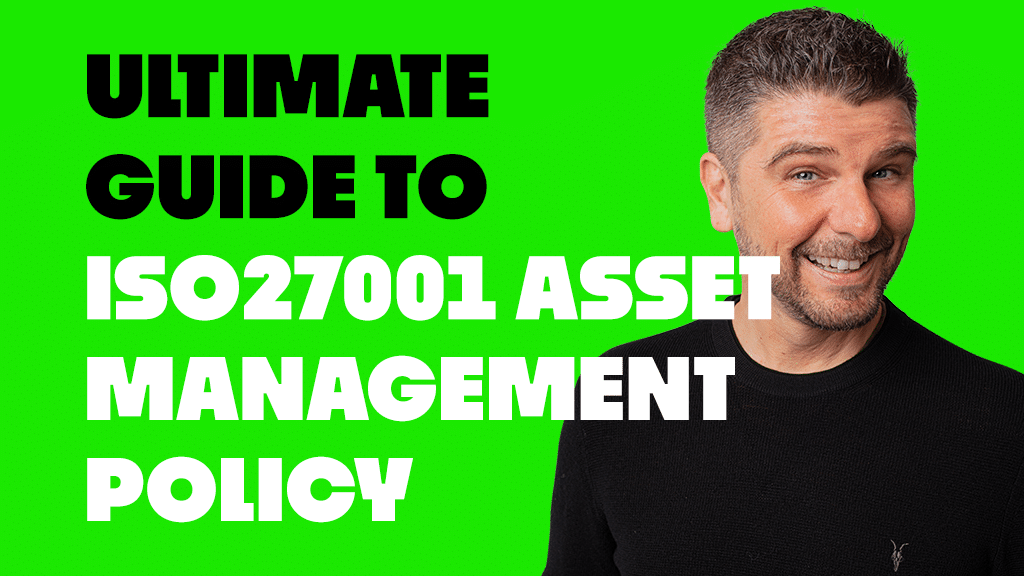

In this ultimate guide I show you everything you need to know about the ISO 27001 Asset Management Policy and exactly what you need to do to satisfy it to gain ISO 27001 certification.
We will get to grips with what asset management is, understand why organisations need an Asset Management Policy, show you how to write one, and let you in on trade secret’s that’ll save you hours of time and effort, simply by using this template.
I am Stuart Barker: founder of High Table, Information Security expert and ISO 27001 Ninja, and this is the ISO 27001 Asset Management Policy.
The ISO 27001 Asset Management Policy sets out the guidelines and framework for how identify, protect and manage assets. It covers the entire lifecycle from acquiring the asset, using the asset to ultimately destroying the asst. It ensures the correct assets are identified and protected. We cannot protect what we do not know.
Asset management is one of the most time consuming activities that you will undertake. The asset management policy sets out what the company does when it comes to asset management. It is your blue print for the asset management life cycle.
The ISO 27001 Asset Management Policy Template is pre written and ready to go. It will fast track your implementation saving you hours of research and writing. ISO 27001 templates are an absolute time and life saver.
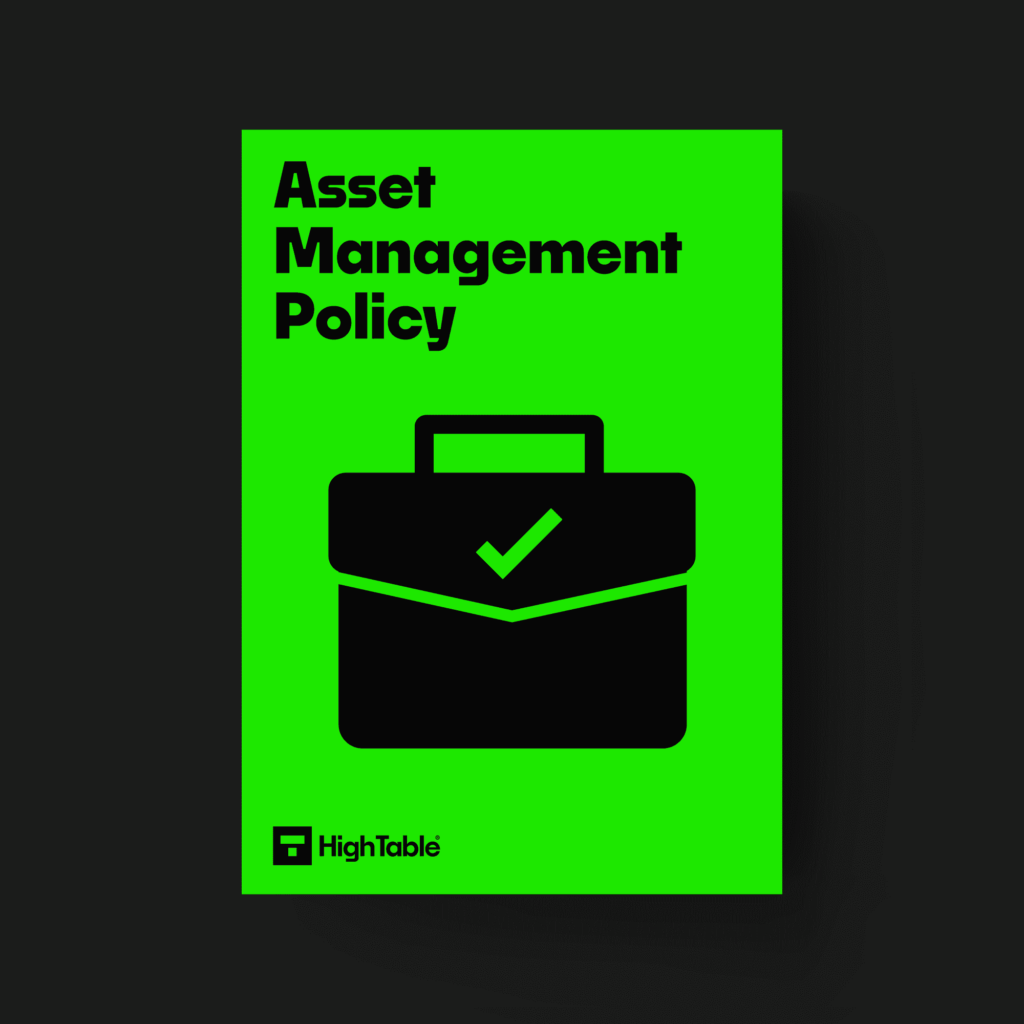
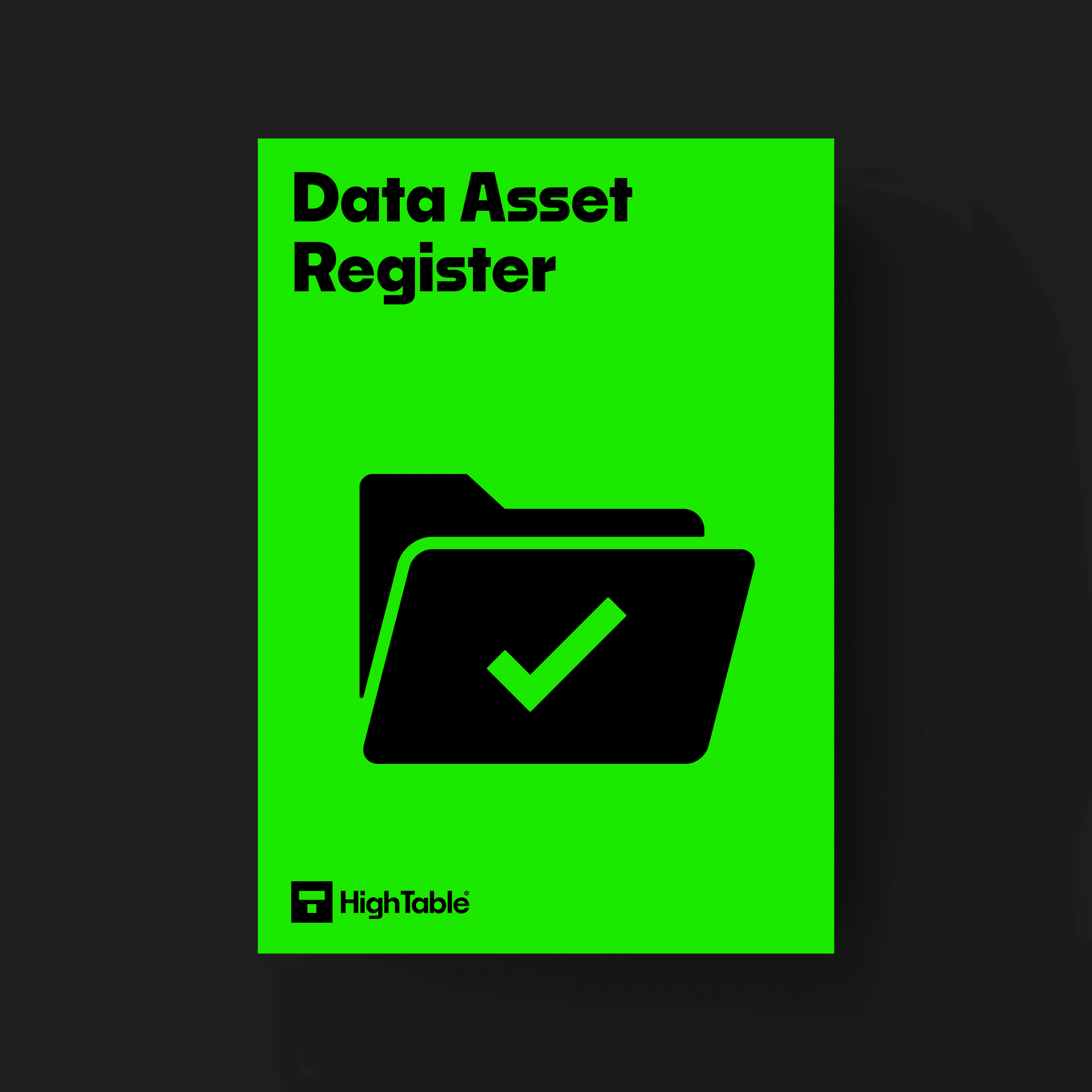

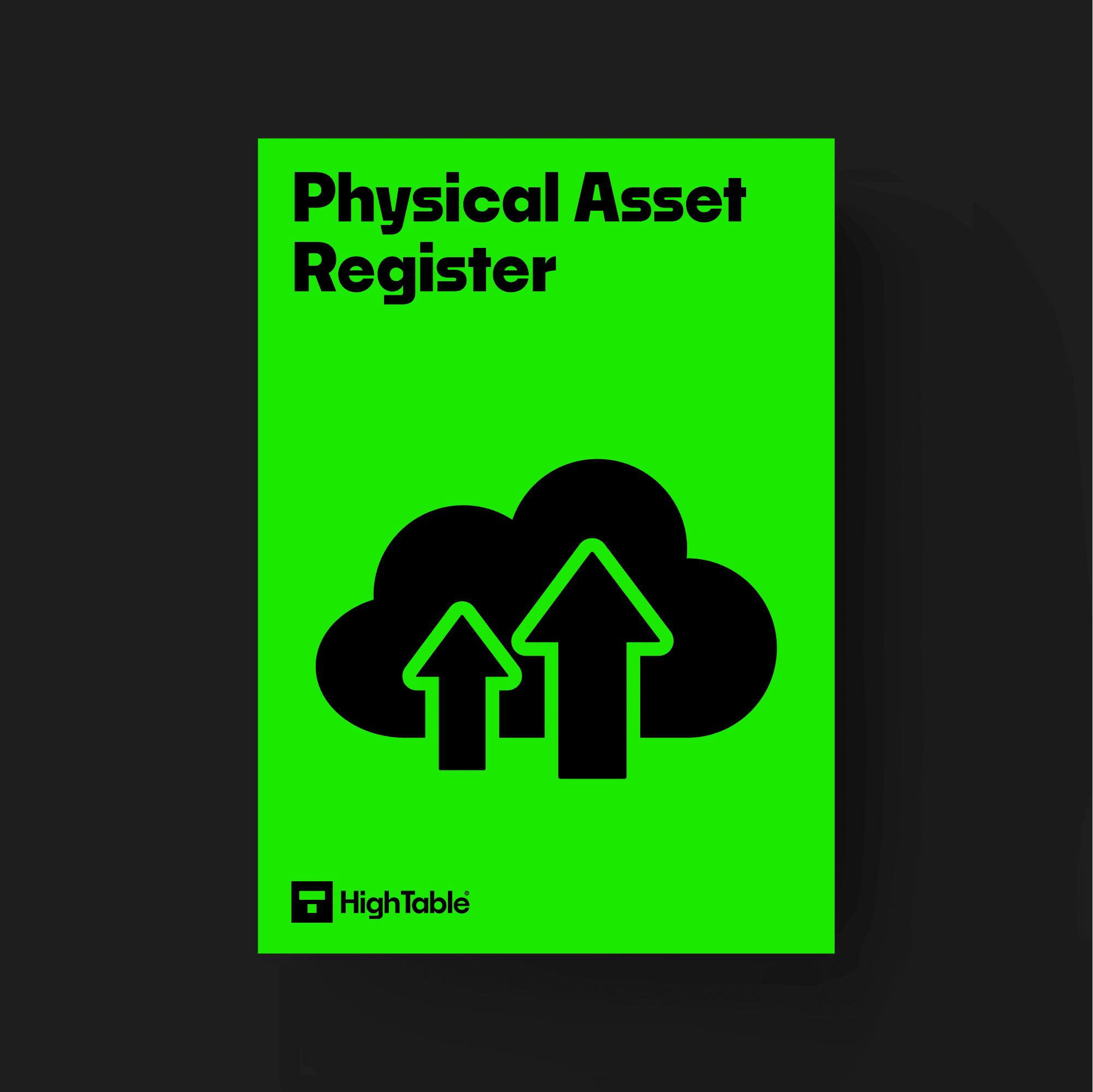
DO IT YOURSELF ISO 27001
All the templates, tools, support and knowledge you need to do it yourself.
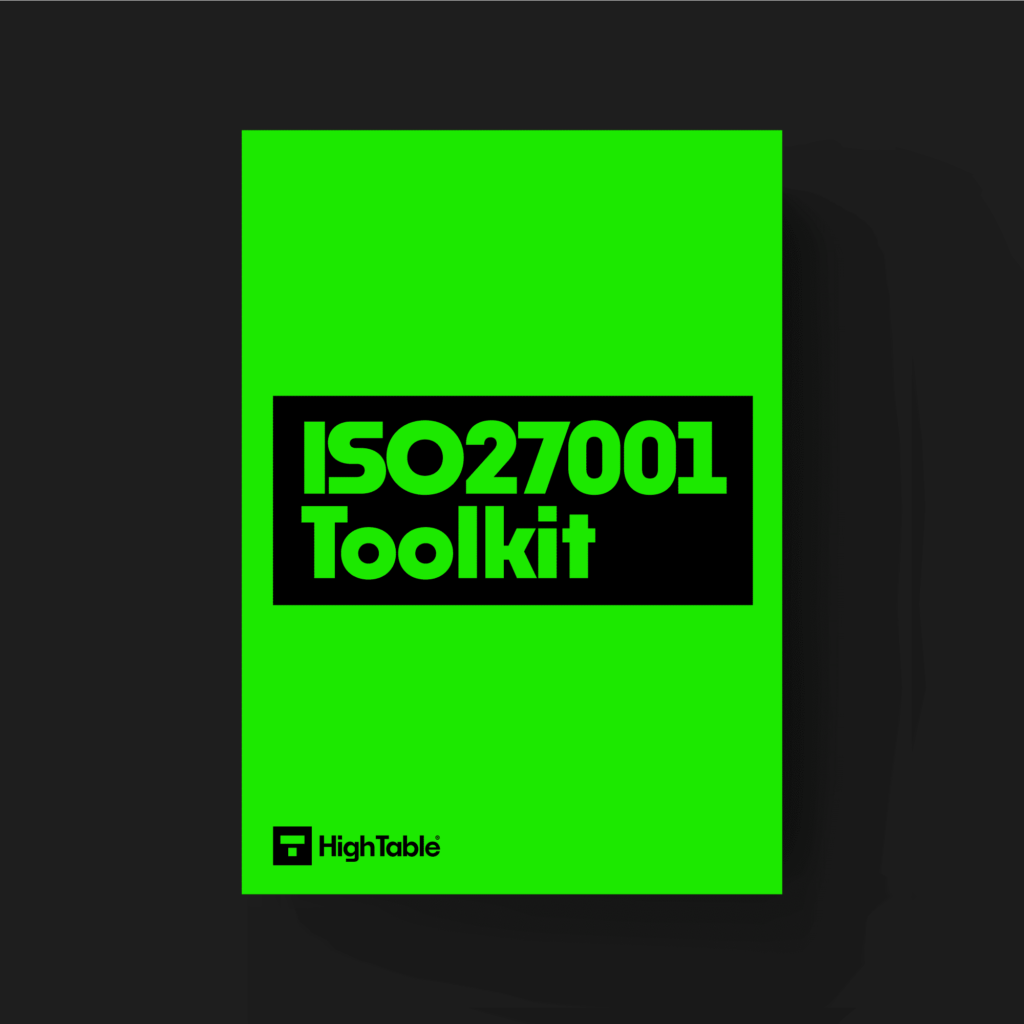
The purpose of the ISO 27001 Asset Management Policy is to ensure the integrity of operational systems and prevent exploitation of technical vulnerabilities.
All assets are identified, classified and protected throughout their lifecycle from creation / acquisition through to destruction. The principle is that we cannot protect what we do not know.
When it comes to cyber security, you cannot protect what you do not know. Having an understanding of what you have, what computers, what data, what mobiles is fundamental in ensuring you have the right protection in place to protect them.
An ISO 27001 Asset Management Policy will set out what you do for managing those assets.
The asset management lifecycle is concerned with how you acquire, or purchase, assets. Then how you deploy them. It covers how you transport them, how you record them, how you allocate them, how you return them, how you reissue them and ultimately how you destroy them. The policy should cover all of these steps.
It seems simple. Just write down all the devices that you have. It is that simple but I am never surprised when even companies of less than 10 people struggle to know what they actually have.
Your asset management policy will cover every device that can store, process and transmit data. We are looking at the easy things like laptops, tablet, phones but we are also looking at switches and routers. Perhaps printers with memory. Perhaps removable storage. Can it store, process or transmit data? If the answer is yes, it is covered by the policy.
Yes. Yes it does. If they want to use it to access our systems and our data.
Information and information processing, storing and transmitting devices are identified and an inventory of these assets is drawn up and maintained. Ownership of assets is identified, agreed and documented along with roles and responsibilities. The acceptable use of assets is covered as is the return of assets. The use of asset registers is included. The following is the content structure for the policy which you can see in the example ISO 27001 asset management policy pdf.
Asset management fits as part of a comprehensive information security management system that we explore on our ISO 27001 Templates Documents Ultimate Guide.
If you want to have a look at an example ISO 27001 asset management policy PDF click the link. It is redacted in places but gives you a good idea of what good looks like.
Here is an extract.
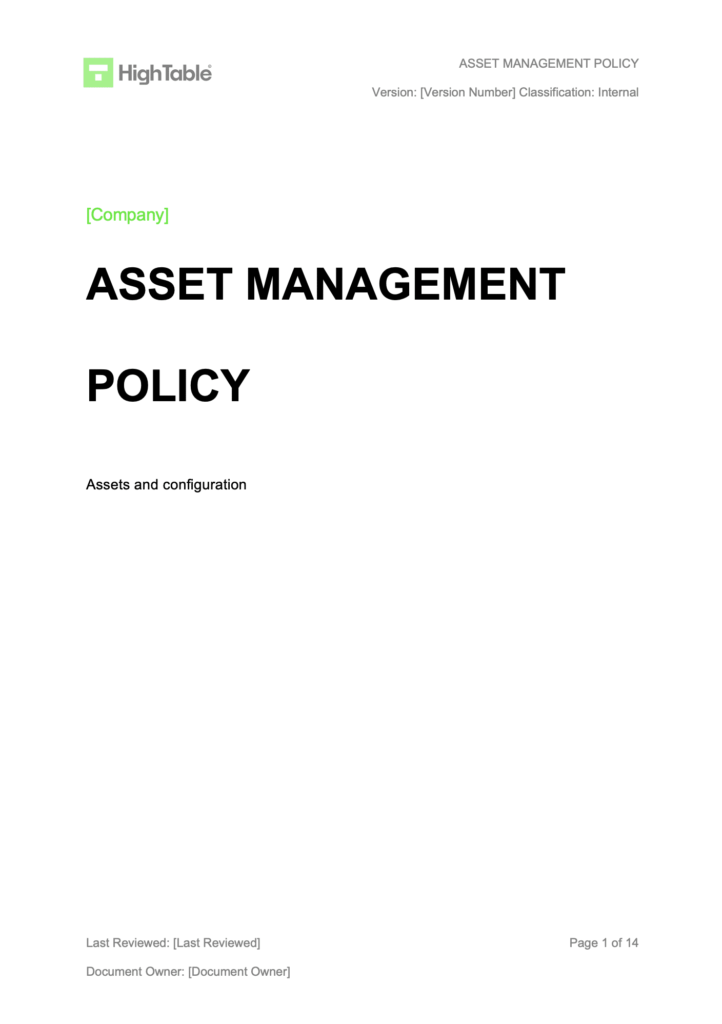

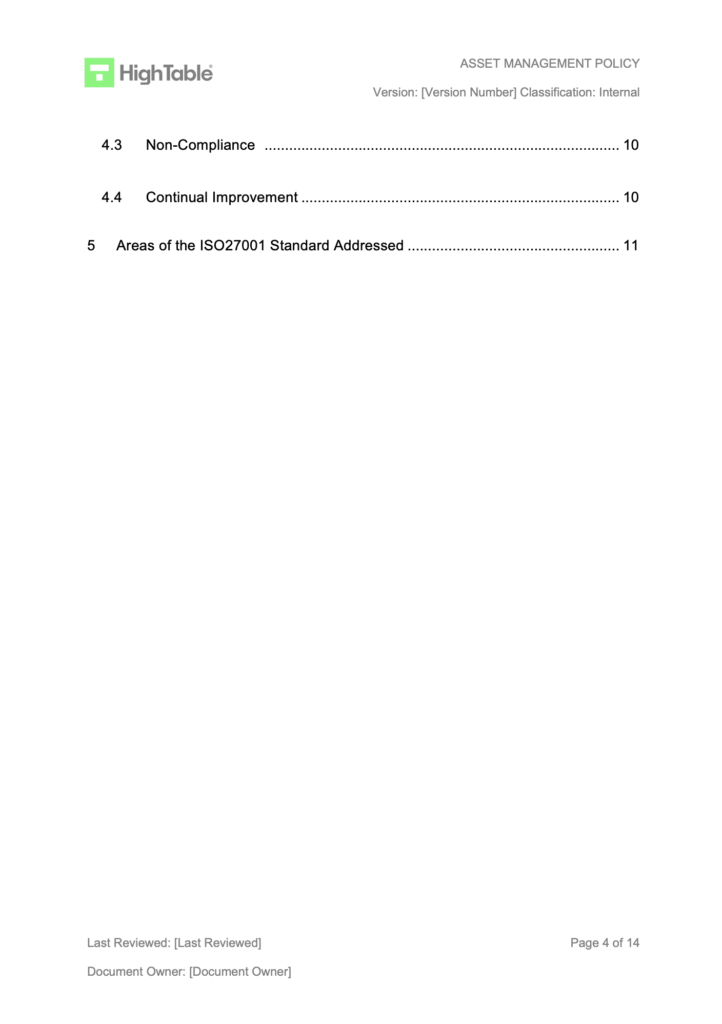


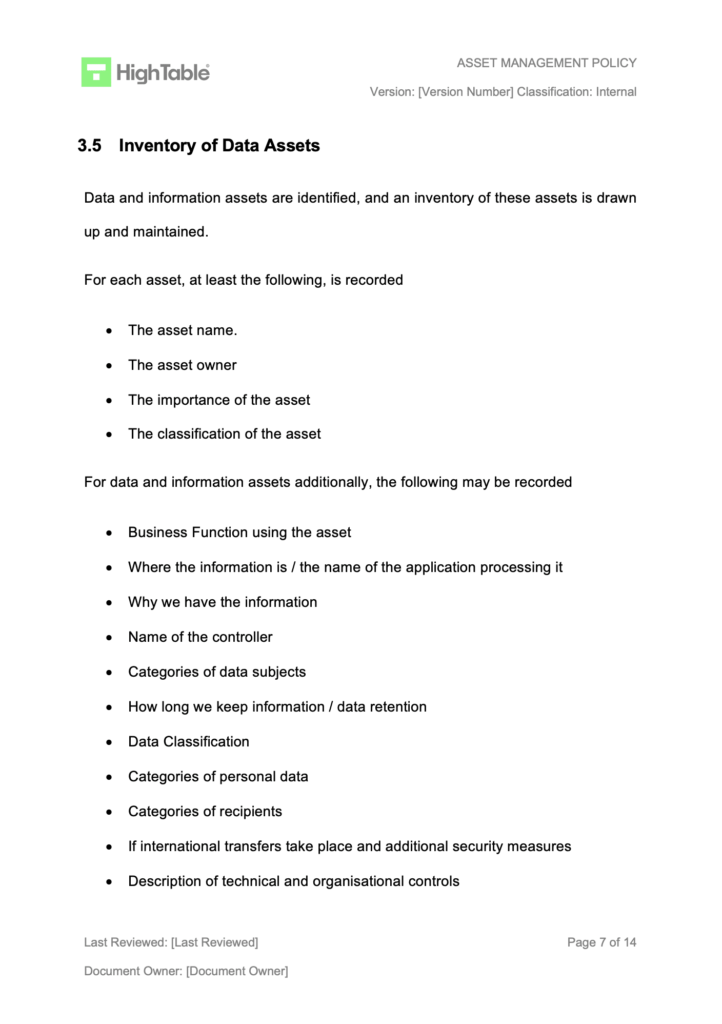
The following are ISO 27001 controls relevant to asset management to consider for further reading:
The ISO 27001 asset management template can be found at High Table. It covers the requirements of ISO 27001 and other standards and is an important document for knowing what to protect as well as controlling assets.
What is an asset management policy?An asset management policy is a document that lays out what you do for the management of physical and data assets. It is a statement of what you do not how you do it. How you do it is located in your process, procedure and operating documents.
What is included in an asset management policy?An asset management policy contains as a minimum:
Document Version Control
Document Contents Page
Purpose
Scope
Asset Management Policy
Principle
Inventory of Asset
Ownership of Assets
Acceptable use of assets
Return of Assets
Policy Compliance
Compliance Measurement
Exceptions
Non-Compliance
Continual Improvement
The purpose of the asset management policy is the identification and management of assets.
What is the scope of the asset management policy?The scope of the asset management policy is all company employees and external party users. The scope covers all company information and physical assets.
What is the principle behind the asset management policy?The asset management principle is that company assets are known, identified and managed with appropriate protection in place.
How do you record and manage assets?For recording and managing assets you need and Inventory of Assets. Information and information processing, storing and transmitting devices are identified and an inventory of these assets is drawn up and maintained.
For each asset, at least the following, is recorded
• The asset name
• The asset owner
• The importance of the asset
• The classification of the asset
For physical assets additionally, at least the following is recorded
• Asset number
• Serial number
• Whether in use
• Last checked by and date
• What the asset does
Individuals, roles or teams are assigned ownership of assets.
Asset owners ensure assets are inventoried.
Asset owners ensure assets are appropriately classified and protected.
Asset owners ensure the proper handling when the asset is deleted or destroyed in line with the Information Classification and Handling Policy.
The asset owner may delegate routine tasks.
Yes. The asset management policy is required for ISO 27001 certification.
Why IT asset management is importantIT asset management is important because you can control what you do not know. If we do not know what we have, how can we control it? Having an effective asset management life cycle that covers the asset from purchase to disposal with the appropriate IT technical controls on the asset will allow us secure our business and the information on which the business relies.
Why is an asset management policy important?An asset management policy is important because it helps you to protect your assets from unauthorised access, use, disclosure, disruption, modification, or destruction. It also helps you to comply with relevant regulations and standards.
What are the key requirements of an ISO 27001 asset management policy?The ISO 27001 asset management policy must be documented, approved, communicated and reviewed at least annually. It should cover the topics of the entire asset management lifecycle that includes the Identification and classification of assets and the entire process from acquisition to destruction.
What are the benefits of the ISO 27001 asset management policy?The benefits of the ISO 27001 asset management policy include:
Reduced risk of data breaches and cyberattacks
Improved protection of intellectual property and other valuable assets
Enhanced compliance with regulations and standards
Increased visibility into and control over organizational assets
Improved decision-making
The head of IT is responsible for the ISO 27001 asset management policy.
Who is responsible for implementing the ISO 27001 Asset Management policy?The IT department are responsible for implementing and managing the requirements of the ISO 27001 asset management policy.
How often is the ISO 27001 asset management policy reviewed?The ISO 27001 asset management policy is reviewed after any significant change that affects the asset management lifecycle and at least annually.
Where can I get more information about the ISO 27001 asset management policy?You can get more information and free resources including training and videos on the ISO 27001 asset management policy at the High Table website.